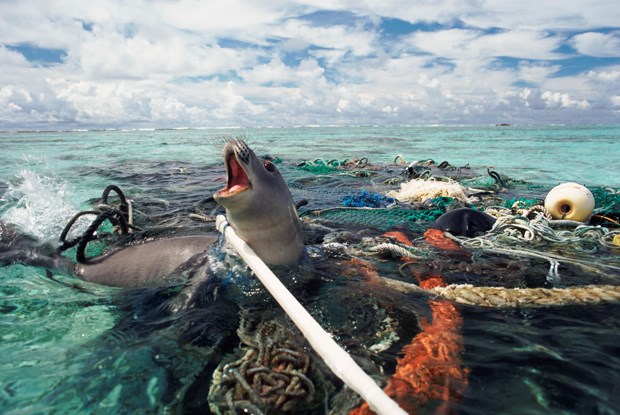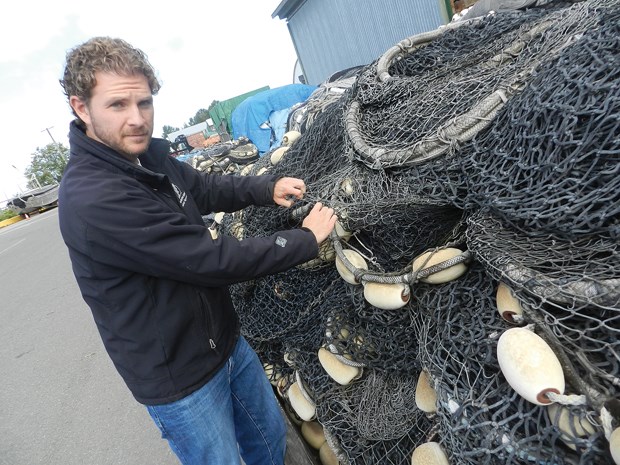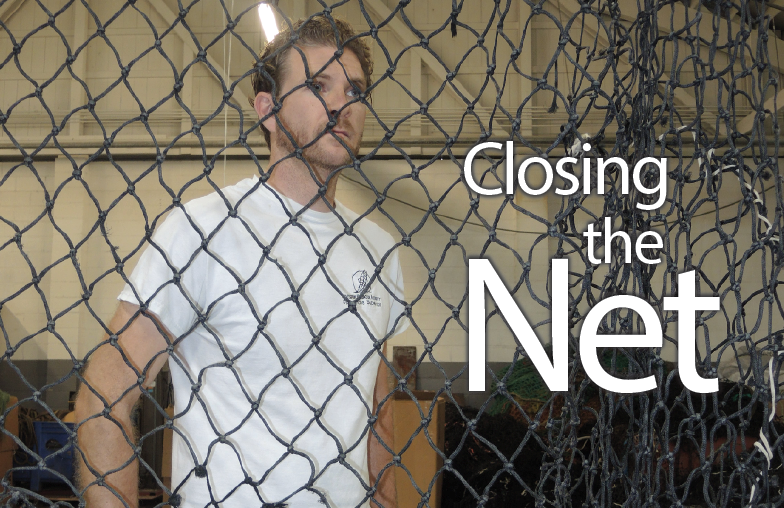With 36 years of experience fishing the waters up and down B.C.’s coastline, Frank Keitsch said he has pretty much seen it all.
He’s experienced the good times with holds laden with fish. There’s been the lean years, resulting in the tightening of an industry with fewer fish licences dramatically reducing the size of the commercial fleet.
He’s witnessed fishers who have been true custodians of the waters, keeping them free of refuse. While other times the open seas have served as a garbage dump for those who had little regard for the place that granted them a livelihood.
“From the ’50s to the ’70s it was a bit of a wild west out there. Many fishermen didn’t have much regard for the environment,” said Keitsch, 49, who bases his two fishing boats in Steveston.

Today, he’s noticed how the pendulum has swung towards limiting impact of commercial activity on the waters. And one of the latest initiatives is to rid the waters of what is called ghost gear — nets that have either been lost at sea, or purposely cut adrift because of the cost and effort involved with properly disposing of hundreds of feet of nylon webbing that has outlived its useful life. These nets remain ever present, indiscriminately trapping all manner of wildlife as they scour the oceans.
Holding on to a lifeline
“A net is a fisherman’s lifeline,” Keitsch said, “So, they will try their absolute best to never lose one. They also cost a lot of money. The big seine ones can run around $100,000.”
But there are some circumstances — bad weather conditions, or net gear getting snagged on something — when they can become a danger to sinking a fishing boat and have to be cut free.
“That’s the ultimate, worst case scenario,” Keitsch said.
He’s seen it happen.
He’s also seen how fishers have trouble parting with their old nets that cannot be used for fishing anymore and rest in storage piles clumped around the uplands of Steveston Harbour.
Joel Baziuk sees them, too. He estimates that about a third of all the nets the Steveston Harbour Authority charges owners for storage are no longer usable.
That’s why when Baziuk, operations supervisor with the Steveston Harbour Authority, was contacted in the spring of 2013 by an Atlanta, Georgia-based, carpet tile manufacturing company to enquire about recycling these disused, “dead nets,” he listened carefully.
From nets to carpet tiles
Baziuk learned that Interface, which bills itself as the world’s largest carpet tile manufacturer, had a year earlier started a recycling program in the Philippines called Net-Works. It hired locals to gather disused nets found washed up along the shoreline and send them to a recycling partner, called Acquafil, which processed the materials for making new carpet tiles.
To date, the efforts have collected 66,860 kgs (147,401 lbs.) of discarded fishing nets, in 14 collection sites in Danajon Bank and the Bantayan Islands.
“It created this whole supply chain and it was Interface who came and talked to me about about it expanding here,” Baziuk said, adding it took a while to work out the logistics of transferring the program to Steveston.
But 18 months on, the first container load containing 40,000 lbs. of old nets collected here was packed and sent to Acquafil’s recycling plant in Slovenia.
“When you are shipping something like that so far away, there’s a very fine margin,” said Baziuk, adding the local program, which is run as a not for profit enterprise, is getting close to filling another 40,000 lb. load which has taken just eight months to gather after being stripped of cork floats and its lead line — a task a small crew of out of season fishers are paid to do.
Providing an alternative
Convincing net owners to part with their mounds of nylon and polypropylene has not been an easy sell at times. But with other disposal options either non-existent or costly, word is seeping out that recycling them is a favourable way to deal with the problem.
“The nets are here, but getting the guys to donate them is hard because they may have paid about $100,000 for one, and it’s been sitting in storage for 20 years and they don’t want to give it away even though it can’t be used anymore,” Baziuk said. “Some of them (net piles) have trees growing through them they’ve been stored for so long.”
The nets cannot be sent through regular recycling channels since the type of materials in fishnets (nylon 6 and polypropylene) have a specific melting temperature not used in the local recycling process.
That leaves either growing storage piles, or new life as a carpet tile or another plastic product.
Protecting wildlife paramount
Josey Kitson, executive director for the Canadian branch of World Animal Protection, is one person who hopes the fishing industry sees the benefits of recycling the stockpile of old nets that could otherwise end up harming wildlife if they become ghost gear.

“We recognize that for marine animals lost and discarded fishing gear makes the ocean a death trap,” she said from WAP’s headquarters in Toronto. “We know that millions of animals are impacted by ghost gear because 640,000 tons of fish nets end up in the oceans every year.”
Kitson said she’s viewed some compelling images and video, and heard accounts of face-to-face experiences from WAP’s members who have encountered sea animals that have become entangled.
“The gear can cause immense suffering for animals — everything from animals drowning to serious injuries,” she said. ”This is something that everyone should be very concerned about.
“We have the largest coastline in the world, so we are definitely experiencing this problem. But the gear migrates, and the ocean does not know country boundaries.”
WAP’s solution is three-fold, Kitson said.
“First, we want to reduce the volume of fishing gear in the oceans. We also want to remove the gear that’s in the oceans now. And we want to rescue animals that have become entangled.”
Called the Global Ghost Gear Initiative it’s mandate is to bring together governments, corporations and other organizations to share best practices.
But resources to make that happen are scarce, so programs such as the net collection program in Steveston is an encouraging step in that direction.
“Joel’s program is really important because it is showing a solution that is absolutely replicable elsewhere and can be implemented on a larger scale,” Kitson said. “It’s taking things one step further and recycling the material, so not only are animals no longer caught and injured in those nets, we also have a sustainable solution.”
To help raise awareness of the issue, WAP members visited Steveston the spring and filmed a video about ghost gear and the local net collection efforts.
Spreading the word
Exposure from WAP’s video and other publicity is helping the local net recycling message spread, Baziuk said, adding he hopes the momentum builds to the point Steveston Harbour can one day act as a recycling hub for nets collected from harbours up and down the coast, and even farm fishing operations that use nets in their processes.
“If this becomes the place for everyone to bring nets then you have something that can work into a more sustainable model,” Baziuk said. “And getting that first net shipment out to get recycled makes it more real for people.”
It’s real for Keitsch whose pair of boats will one day need their nets disposed of.
“Without a doubt, it’s something I will be doing with my own nets. It’s a no-brainer,” he said. “The whole process is a win-win situation.
“I am glad someone took it upon themselves to set up a program like this because it’s not just about today and tomorrow. It’s about the future.”



